Table of contents
In the real world, billion-dollar companies don’t fall from the sky. They claw their way out of warzones, recessions, humiliating product flops, and boardroom mutinies.
Did you know that in 1995, Samsung’s chairman ordered 150,000 defective phones and microwaves burned in a giant bonfire, right in front of 2,000 employees? It wasn’t a tantrum. It was a turning point. That blaze marked the death of Samsung’s mediocrity and the birth of its obsession with quality.
Samsung’s story reads like a modern miracle. In 1938, Korea was little more than a rural backwater under colonial rule. By 2023, it had soared to the world’s 10th largest economy, much of that thanks to one man’s gamble and one company’s growth.
The man was Lee Byung-chul, and the company was Samsung. He started with a tiny grocery-trading shop in Daegu that sold noodles and dried fish.
78 years later, Samsung Group’s revenues exceed $300B, and its factories and products span the globe. For context: at times, Samsung’s annual sales have equaled about 20% of South Korea’s GDP.
Roughly one in every five smartphones shipped globally was a Samsung, and Samsung commanded 28.3% of the world TV market (a 19-year streak as #1).
We’re talking about a company so massive it contributes 20% of South Korea’s GDP. Twenty. Percent.
But here's the twist: Samsung didn’t get here because it had the best tech. It got here because it was stubborn. Strategic. Slightly insane. And run by a man who believed in rolling the dice hard when everything was stacked against him.
This isn’t just a story of growth. It’s a story of obsession, desperation, and adaptability. It’s a story of a man who turned colonial trauma into corporate triumph. And it might just be the wake-up call founders need.
The Dropout Aristocrat Who Kicked Off an Empire
Let’s rewind to 1910. Lee Byung-chul is born into Korea’s yangban class. Basically aristocracy with a side of existential dread, because Japanese colonization had just begun, and Korea wasn’t exactly thriving.
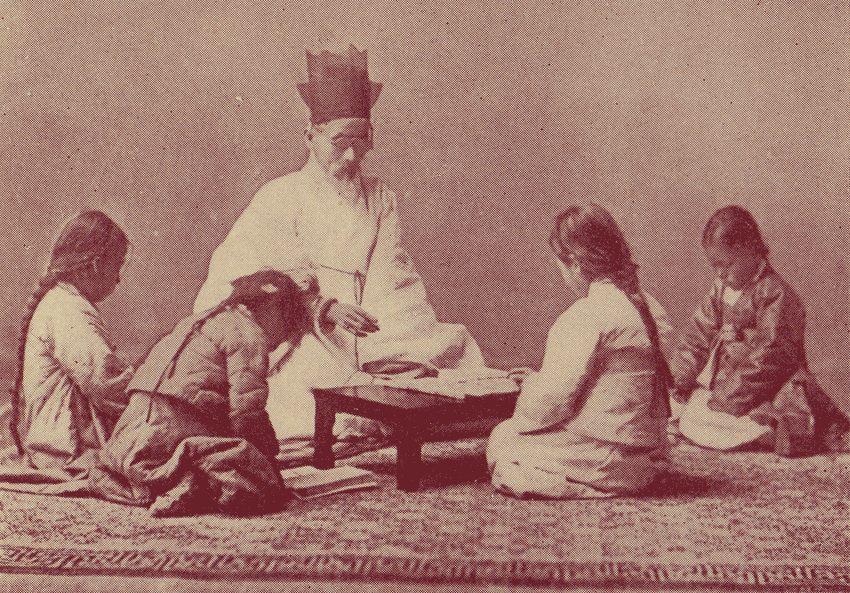
Lee was bright, bookish, and eventually got into Waseda University in Tokyo, a top Japanese college.
Then he dropped out.
Why? No one knows for sure. Maybe he hated the colonizers. Maybe he hated exams. Maybe he realized that memorizing Confucian texts wouldn’t help him feed his country.
Getting Started in The Business
After returning to Korea, Lee tried launching several ventures. In the 1930s, he invested part of his inheritance in a rice milling business, only to lose it when regional markets collapsed.
At 28, he bought some trucks and started Samsung Trading Company. Basically, DoorDash for dried fish and ramen.
And here's the kicker. He called it Samsung, or "Three Stars", because they wanted it to shine forever. Which, honestly, sounds like the kind of poetic nonsense you say when you’re broke but believe in destiny. The thing is… he wasn’t wrong.
Lee’s meager storehouse became a portal to international trade: by exporting Japanese-made consumer goods from Daegu to China and within Korea, Samsung quickly turned a profit.
Lee was humble and hands-on; friends later recalled how he personally oversaw truck shipments. He also had a bold vision from the start, dreaming of building a large enterprise that would help lift his country out of poverty.
From the outside, Lee’s early life might have looked cushy thanks to his class, but he faced real hardship. Korea had only 22% arable land, virtually no oil, and very little industry. Colonial rule also meant Koreans had limited options.
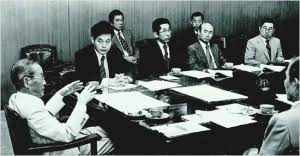
He was known to be street-smart, industrious, and politically savvy (something that would serve him well later).
Noodles, Warzones, and a Million-Dollar Pivot
By the time World War II hit, Samsung was delivering goods all across Korea. Business was OK. Not great. But then the Korean War (1950–1953) happened, and everything burned.
Literally.
Lee fled Seoul. Samsung’s offices were destroyed. Korea was in rubble. Most people would’ve taken the hint and folded. Lee? He saw an opportunity.
He set up shop in Busan and pivoted to sugar refining. Why? Because everyone needed calories, not fish. Then he built a textile mill. Then a flour factory. This guy was like the original Mr. Beast but for war-torn industrialization.
And here’s what’s wild: by the late 1950s, Samsung had already become one of Korea’s largest companies, holding down 19% of the nation's corporate borrowing. That’s not just dominance. It’s economic dependency.
The real lesson? He didn’t wait for the market to be ready. He created the market by giving people what they needed, not what he wanted to sell.
Power, Policy, and the Art of Playing the Game
When Korea’s authoritarian government started pushing industrial growth in the '60s, he aligned Samsung like a well-behaved golden retriever.
He believed that industrialization, not agriculture, was the path forward. Within a decade, Samsung had branched beyond food into banking, insurance, cement, fertilizer, and oil.
You want exports? Here's a shipping business. Cheap domestic production? Here's a cement factory. You want televisions? Here, have five million of them by the 1970s.
Samsung became Korea’s poster child for post-war industrial growth.
But it wasn’t all clean and glorious. In 1961, the military tried to “crack down” on monopolies and forced Samsung to give up its bank holdings. Lee didn’t scream or fight. He waited. Played the game. Pivoted. Sometimes, you win by outliving your enemies.
Meanwhile, Samsung kept expanding. Oil, fertilizers, insurance, construction… you name it. Lee built a sprawling empire that looked more like a government than a company.
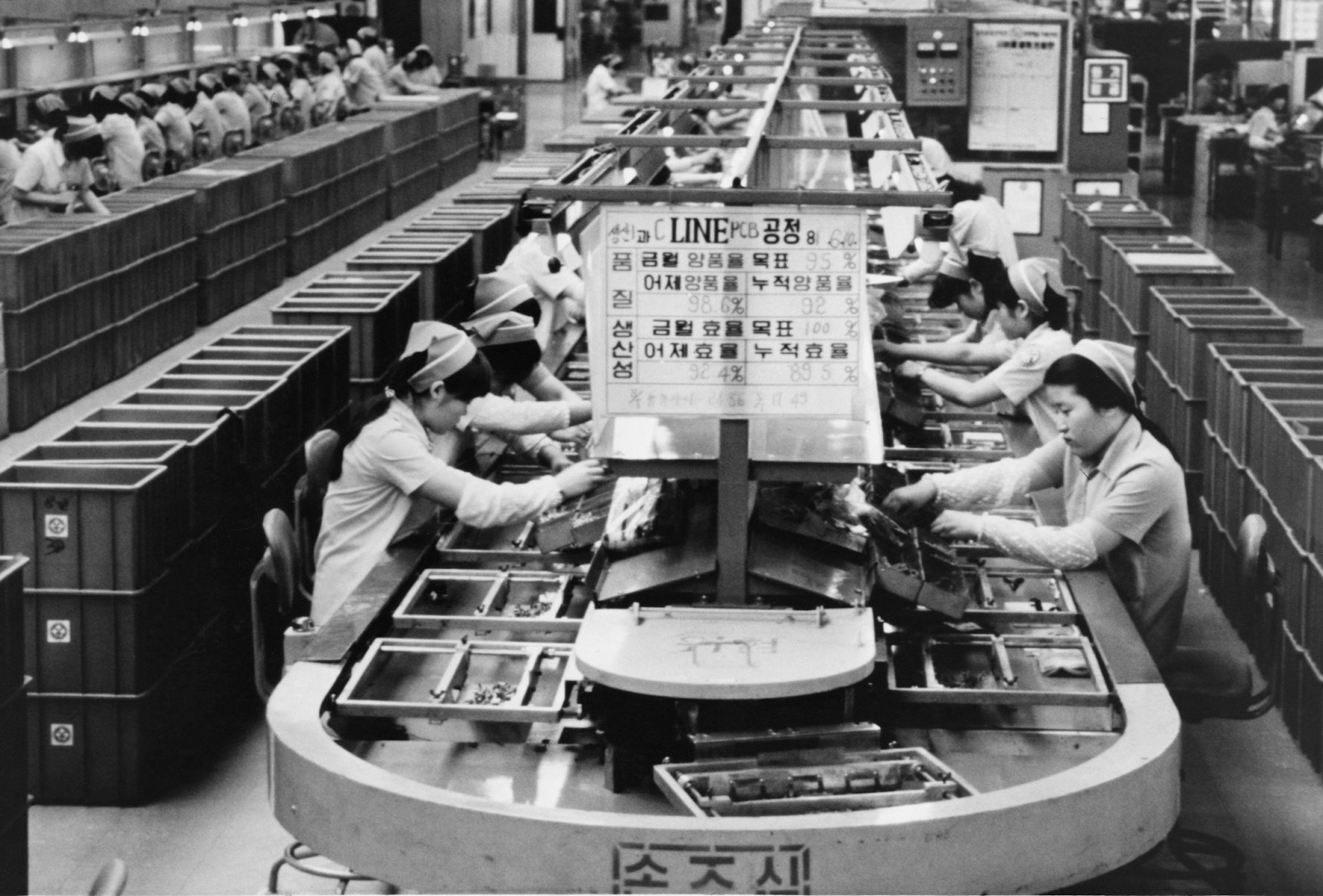
And it worked. Samsung helped double Korea’s life expectancy and dragged its GDP out of the mud. That’s not branding. That’s infrastructure.
From Textile Titan to TV God: The First Great Pivot
By the 1970s, Samsung could’ve stayed comfy in sugar and textiles. But Lee saw the writing on the wall: hardware was the future.
He launched Samsung Electronics in 1969 with one product: a cheap, black-and-white television. It wasn’t sexy. It wasn’t advanced. But it was local, affordable, and exactly what Korea needed.
Then came calculators. Then semiconductors. By 1978, Samsung had built five million TVs and was cranking out chips in factories the size of stadiums.
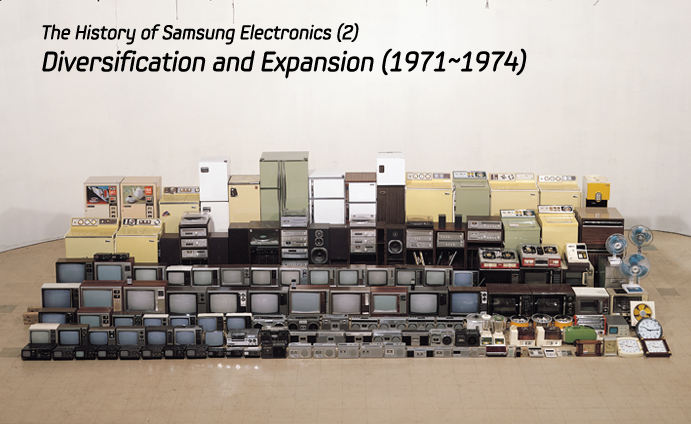
Why should founders care? Because this was a pivot into the unknown. Lee had no background in tech. But he had an instinct most founders don’t: if the world is going digital, you either lead, or you get deleted.
Lee Dies. The Company Gets Religion.
Lee Byung-chul passed away in 1987. His son, Lee Kun-hee, took over and immediately decided the company wasn’t good enough. (Imagine inheriting the biggest business in the country and going, “You know what? This is crap.”)
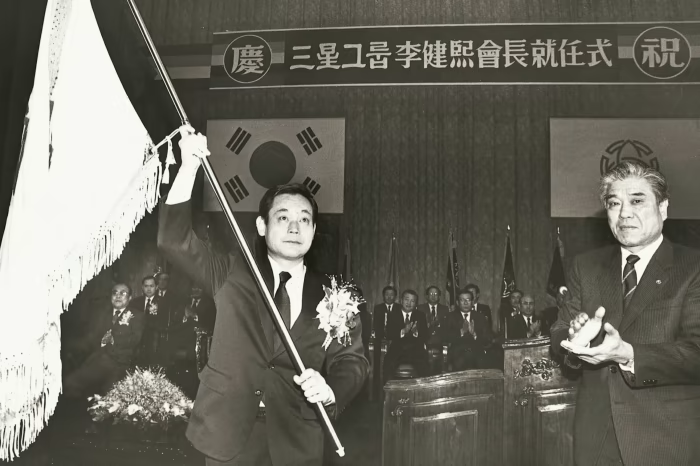
He wasn’t wrong.
Samsung was known globally as a low-quality brand. Its phones were second-rate. Its TVs weren’t trusted. Kun-hee famously flew all his executives to Germany in 1993 and gave them a dramatic speech: “Change everything except your wife and kids.”
Then he made them burn 150,000 defective phones and microwaves in a public display of shame.
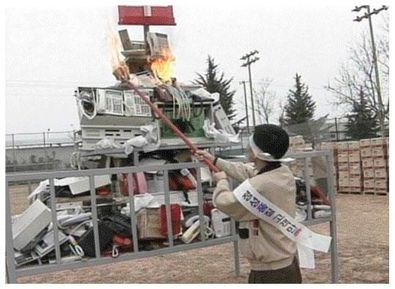
This was Samsung’s come-to-Jesus moment.
They revamped manufacturing. Tripled R&D. And in less than a decade, Samsung went from a joke to a serious global player. Their phones didn’t just work. They started winning.
Kun-hee’s message to his team was basically: stop being safe. Start being excellent. Or we die.
When Samsung Beat Apple (And How It Almost Didn’t)
Let’s fast forward. In the early 2000s, Samsung started getting serious. LCD panels. Flash memory. Smartphones.
Then came the Galaxy series and the showdown with Apple. For a hot minute in 2013, Samsung actually overtook Apple in global smartphone sales. Not just by a little, but by tens of millions of units.
Yes, Apple sued. Yes, Samsung paid billions in patent settlements. And no, the Galaxy S4 didn’t exactly age well. But the point is that Samsung went toe-to-toe with the most powerful company on Earth and didn’t blink.
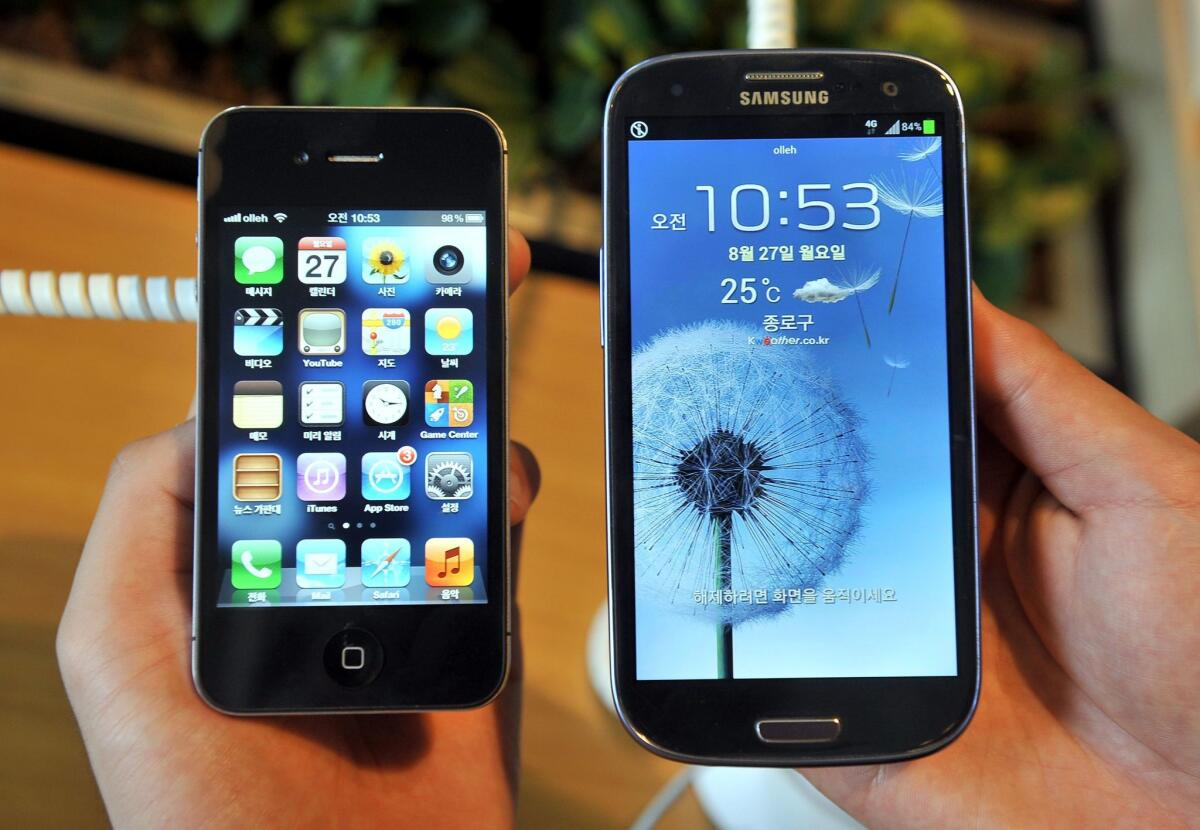
Why? Because Samsung had already burned its past. And once you’ve burned your past, you’re free to build the future.
(And if you're wondering… yes, they’re still duking it out. Apple temporarily took the top spot in late 2023, but Samsung stayed ahead for the full year.)
Chips, Chips, and More Chips: The Billion-Dollar Brain Move
You know what’s less sexy than fish trading? Semiconductors. Tiny little wafers of silicon that no one understands but everyone depends on. In the early 2000s, Samsung owned this game. They built fabs (factories) the size of football stadiums and poured billions into DRAM, NAND, and processors.
By 2017, Samsung was the #1 chipmaker in the world. And not by a little. By a lot. In 2024 alone, they made $66.5B just from chips. That’s enough to buy Twitter. Four times. And still have change left to buy actual engineers to run it properly.
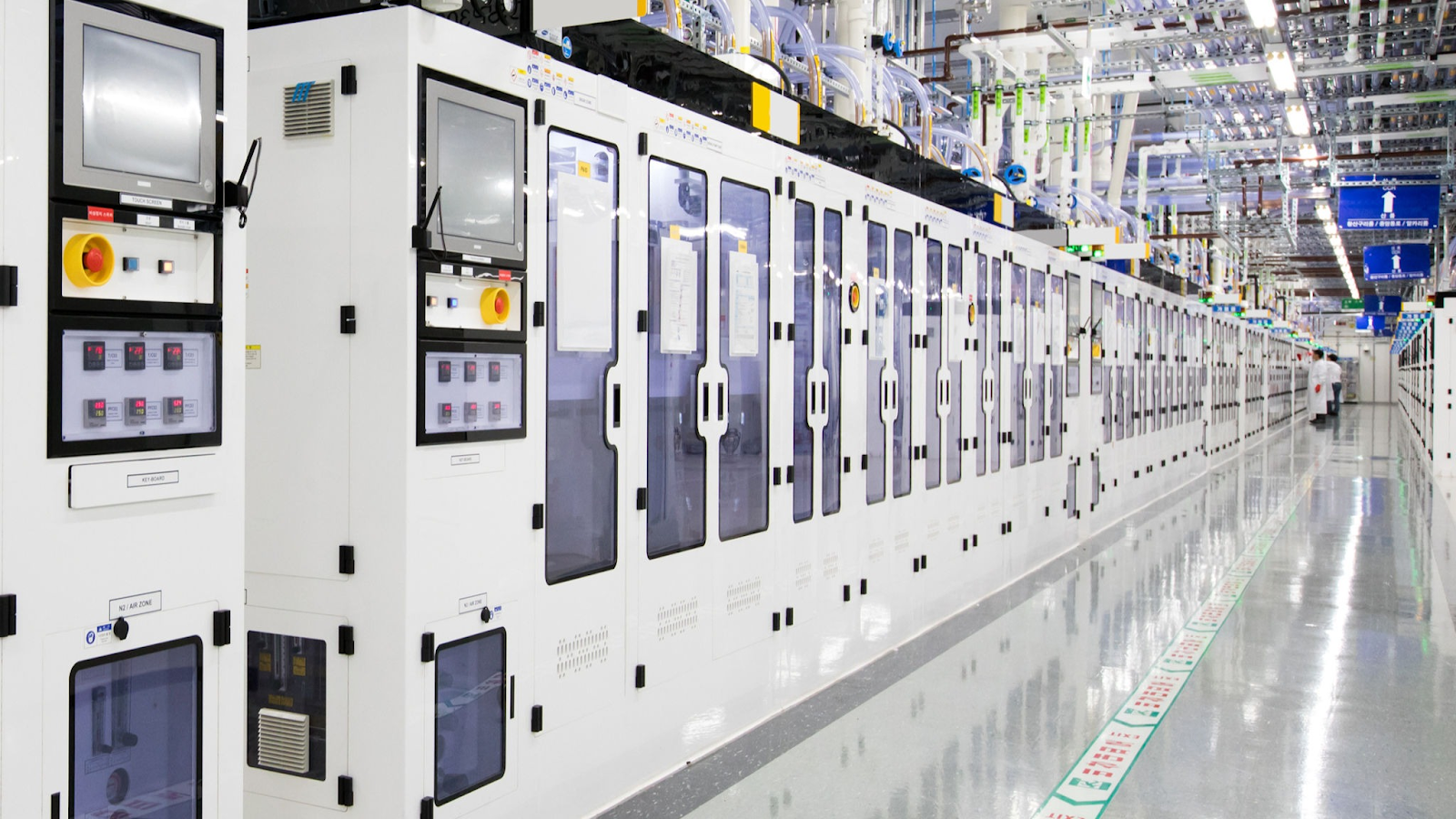
Here’s what founders should understand: semiconductors are not glamorous. They’re not tweet-worthy. But they’re vital. And Samsung knew that whoever controls the chips controls the digital economy.
So they doubled down. While other companies were building flashier phones, Samsung was laying down the wiring for the AI future.
That’s the lesson: the unsexy stuff builds empires. It’s not always about the shiny pitch deck. Sometimes it’s about sitting in a clean room, sweating over thermal conductivity.
Samsung Today: The Smartest Giant You Never Think About
Fast forward to 2025.
Samsung still holds the crown as the world’s largest smartphone brand (by shipments), makes more TVs than anyone else, and dominates the memory chip market. It’s got chip factories in Texas, OLEDs in Vietnam, and 5G towers across the globe.
You probably used something Samsung made in the last 24 hours and didn’t even know it. That’s how deeply they’re embedded into your life.
And now they’re going all-in on AI. Not the fluffy, corporate kind. The real stuff: AI assistants baked into Galaxy phones, high-bandwidth chips for data centers, even foldable phones powered by large language models.
They call it Galaxy AI, and it’s already active on 200M devices, aiming for 400M next year.

Think about that. Four hundred million devices running on-device AI. That’s not a product strategy. That’s an operating system for reality.
Meanwhile, Samsung’s competitors are trying to keep up. Apple’s launching AI stuff in iOS, sure, but it’s Samsung that’s quietly shaping the hardware AI runs on.
The South Korean Economy Has a Samsung Dependency Problem
Let’s take a beat to acknowledge something real: Samsung is so big, it’s kind of terrifying.
We’re not being dramatic. At one point, Samsung was responsible for 20% of South Korea’s entire GDP. That’s one-fifth of a country’s economy… resting on a single brand.
Imagine if Amazon, Boeing, Tesla, and JPMorgan were all one company. That’s Samsung in Korea. It’s phones, homes, TVs, credit cards, insurance, shipbuilding, biopharma… you name it.
Some critics call this dangerous. Others say it’s proof of Samsung’s genius. Both are probably right.
But there’s no denying this: Samsung dragged South Korea out of poverty. It literally lifted a war-torn rice-farming nation into one of the most tech-advanced economies on Earth. It created jobs, education, infrastructure, and made being an engineer a dream job.
In some parts of Korea, landing a job at Samsung is like winning the Olympics. No joke.
The Next Chapter: AI, 2nm Chips, and Taking on TSMC
Samsung’s now building a future that would make even sci-fi writers blush.
They’re mass-producing 3-nanometer and 2-nanometer chips (the size of a virus). They're investing $17B+ into fabs in Texas, and billions more into advanced packaging and high-bandwidth memory for AI servers.
They’ve partnered with Google’s Gemini to bake AI directly into phones, wearables, even washing machines (yes, your laundry is about to get smarter than your ex).
And here’s the thing: they’re not slowing down.
Analysts believe Samsung might actually challenge TSMC in advanced chip foundries by 2025, something no one thought possible five years ago.
And all of this, mind you, is happening while the company is still under the control of Lee Byung-chul’s grandson, Lee Jae-yong. Third generation. Still hungry. Still swinging.
The family business isn’t just alive. It’s evolving. Like some kind of AI-fueled kaiju.
So, What Should Founders Actually Learn From This?
Look, you’re not going to become Samsung. But you don’t have to. You just need to learn from what they did right and wrong.
Lee Byung-chul started with noodles and trucks. He had no roadmap. No YC mentors. No VCs with Patagonia vests whispering about runway. Just guts, timing, and an unshakeable vision.
He failed. He pivoted. He adapted. Then he did it all again.
Lesson #1: Don’t worship the original idea. It’s a starting point, not a religion.
Lesson #2: Build what the world actually needs, even if it’s sugar during a war.
Lesson #3: If you suck at something, admit it and burn the old version. Literally, if needed.
Samsung reinvented itself five times. Fish trader. Sugar baron. Textile king. TV factory. Semiconductor monster.
That’s how it won.
Final Thought: Burn the Microwaves
Here’s the moment that defines Samsung for me: Lee Kun-hee standing in front of a pile of broken electronics, 150,000 TVs and microwaves, and ordering them torched.
That’s what it takes to kill mediocrity. That’s what it takes to become legendary.
Not strategy. Not slides. Fire.
If you’re building something today, ask yourself: What do I need to burn to get to my best version? What do I need to say no to, even if it’s safe? What part of my company is still trading fish when I should be building chips?
Because the next Samsung isn’t going to start as a Samsung. It’ll start as a mess, like everything else.
Just make sure it evolves.

%20Logo.svg)
.webp)



